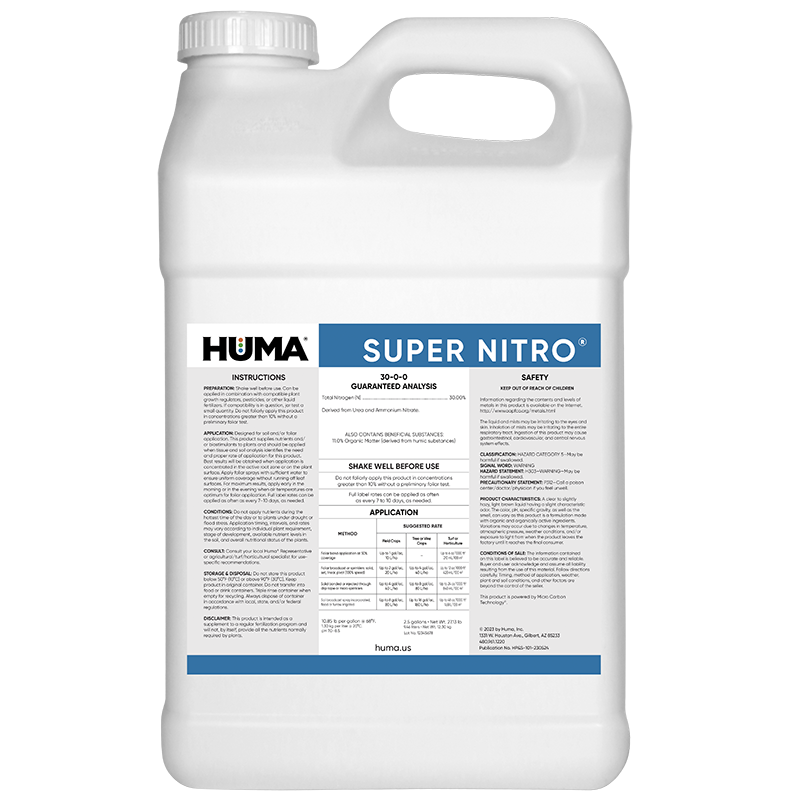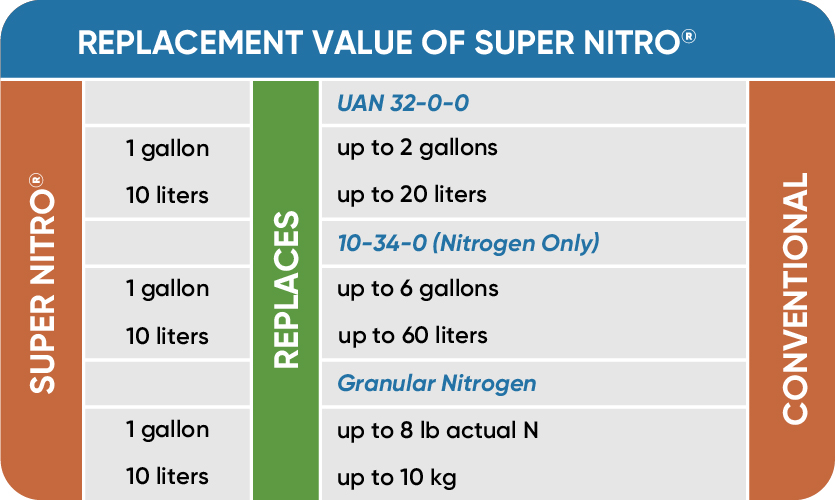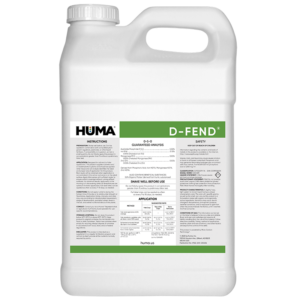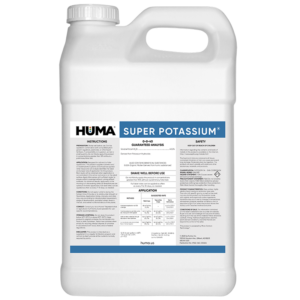SUPER NITRO
Benefits of Use:
- 2 times more efficient than UAN 32
- Resists nitrogen leaching and volatilization to remain water soluble and available to plant roots
- Provides quick crop response and can be applied just prior to actual crop need
- Moves with irrigation water to aid in proper placement
- Can be tank-mixed to improve availability of other nitrogen solutions
- Is non salt-forming
Deficiency Symptoms—When to Apply:
- Chlorosis, usually appearing on older leaves first
- Slow growth and stunted plants
- Lower protein, fewer leaves, and early maturity
- Reduced yield potential
FAQs
Related Products
Related Case Studies

Huma® and Zia Pueblo Farm Corn Project
Background Many small-scale farms (1-2 acres each) are established in Zia Pueblo community near San Ysidro, New Mexico. Huma® Inc. was asked to establish an experimental farm in the tribal community that could demonstrate the usage of beneficial agricultural inputs producing high-yield crop and preserving the health of the soil. Huma® humic-based products stimulate plant

Huma® Program Increases Marketable Strawberry Yields 19%, With an ROI > $5,000/acre
Objective This field trial assessed the effects of an additional 8 foliar applications of Huma® products throughout the growing season on the yield of Monterey strawberries when compared with the grower’s standard crop nutrition program. Materials & Methods This trial was set up in a complete randomized-block design conducted during the growing season of April

Huma® Program Increases Strawberry Yields 13%, With an Increased Return of > $3,400/acre
Objective This field trial assessed the effects of an additional 4 foliar applications of Huma® products on the yield of Portola strawberries when compared with the grower’s standard crop nutrition program. Materials & Methods This trial was set up in a complete randomized-block design conducted during the growing season of July 18 through November 28
Related Blog Posts

This Week in Ag #4
Wednesday was Tax Day. For farmers, it was. Unlike the rest of us, farmers (and fishermen) file taxes on March 1. Due to the complexities of farming, including depreciation schedules for machinery, most farmers hire a professional tax preparer to help file their Schedule F. These are often independent accountants. And most are long-standing, often

From Doubt to Record Yields: My April Soybean Story
Dean’s response was predictable: ‘What in the **** are you thinking, Fred? You never plant beans until May!’ Five months later, that same field produced my highest-yielding soybeans ever. Turns out, planting early isn’t crazy—it might just be the smartest move I’ve made.

This Week in Ag #18
In the sports of track and swimming, relay races are often the most exciting events of the meets. You know the concept: a team of usually four athletes races as they follow each other in succession, showcasing performance and precision. For a split moment, while handing a baton or projecting yourself toward the pool as







